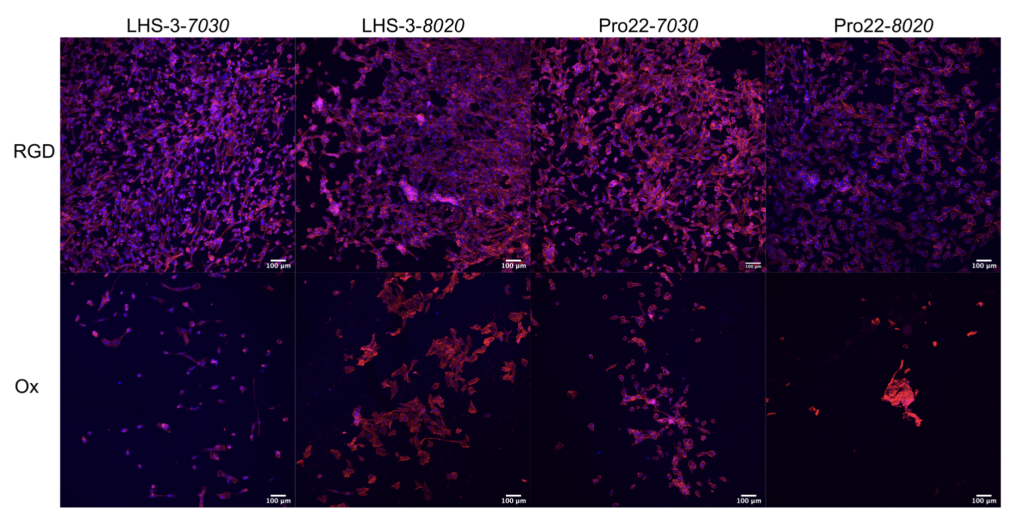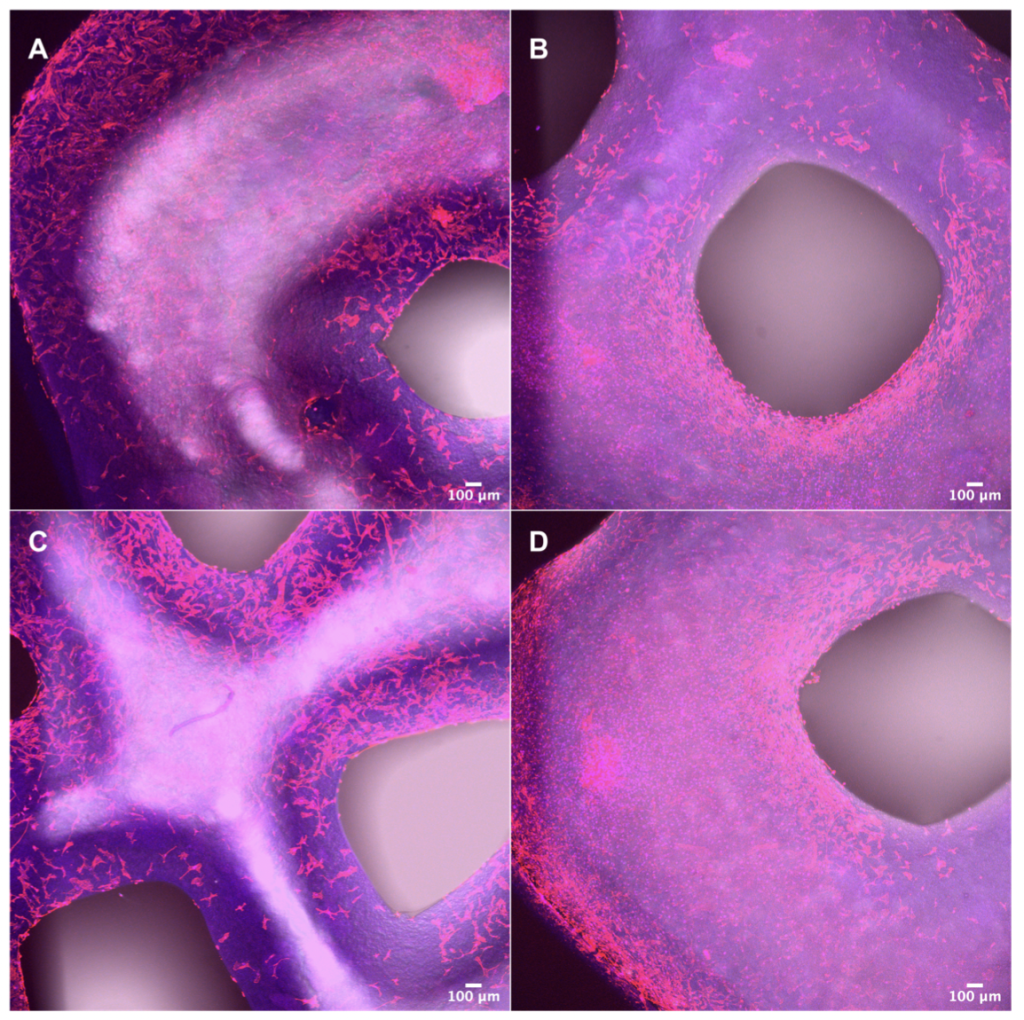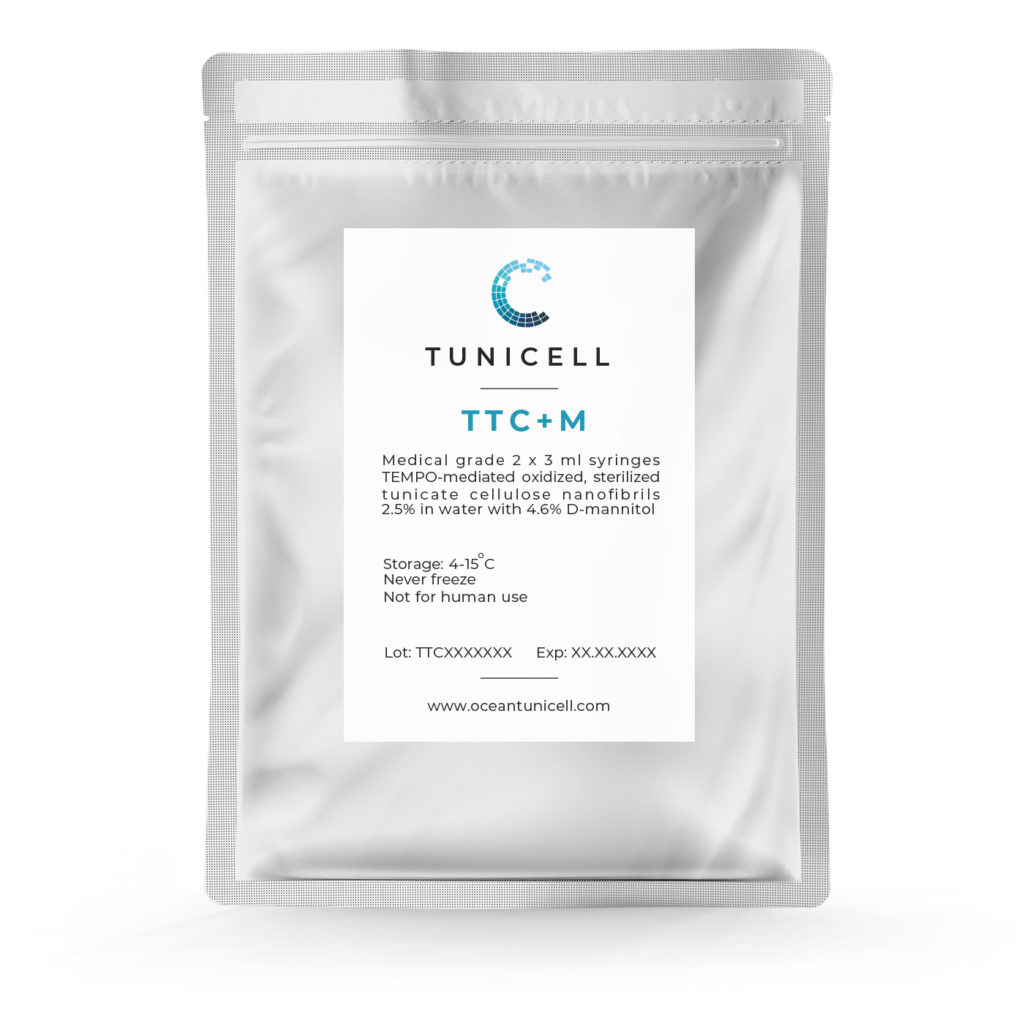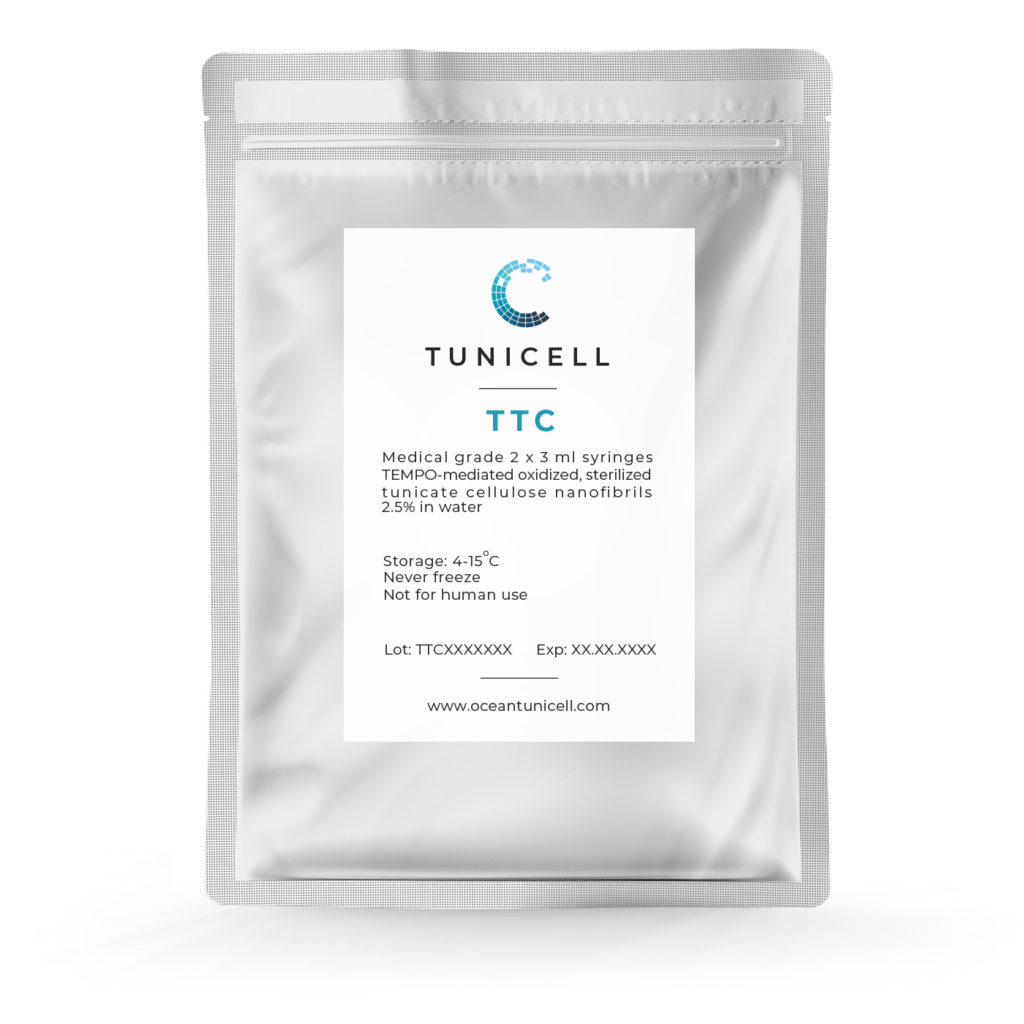Ingrid Weløy Aarseth has just finished her Master of Science in Biotechnology at the Norwegian University of Science and Technology (NTNU). In her thesis she worked with functionalized alginate-nanocellulose hydrogels for 3D cultivation of human dermal fibroblasts. Ingrid used TUNICELL TTC, a transparent biomaterial well-suited for imaging, to bioengineer 3D constructs that were seeded with cells.
Human dermal fibroblasts are important members of the connective-tissue cell family. They are often used in tissue engineering as they are easy to grow in culture, and have high rates of activity in wound healing. In the body, fibroblasts migrate to injured tissue sites to produce a collagenous matrix to heal the injured tissue.
This novel approach using bioprinting in combination with a three dimensional culture system provides benefits to studying cell and tissue function since these cells behave much more like they do in the body. Human dermal fibroblasts resemble their in vivo morphology, with elongated and spindle-shaped morphology when in 3D, compared to 2D where they have fan-shaped lamellae and slower proliferation.
Creating better in vitro microenvironments for cells that are more physiologically representative to the body is important in order to establish tissue models that can be used in cancer and drug research.
Read Ingrid Weløy Aarseth’s full thesis published in the NTNU database here: https://ntnuopen.ntnu.no/ntnu-xmlui/handle/11250/3012761
Try TUNICELL TTC or TUNICELL TTC + M for your research:






